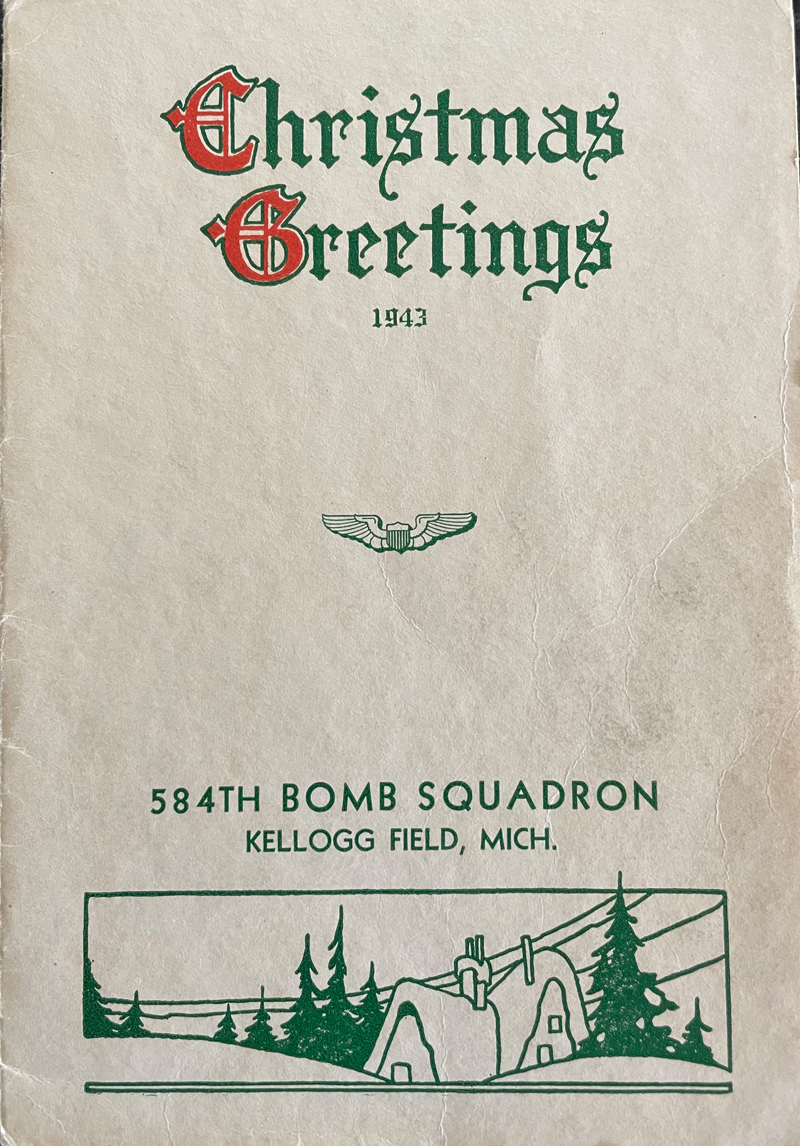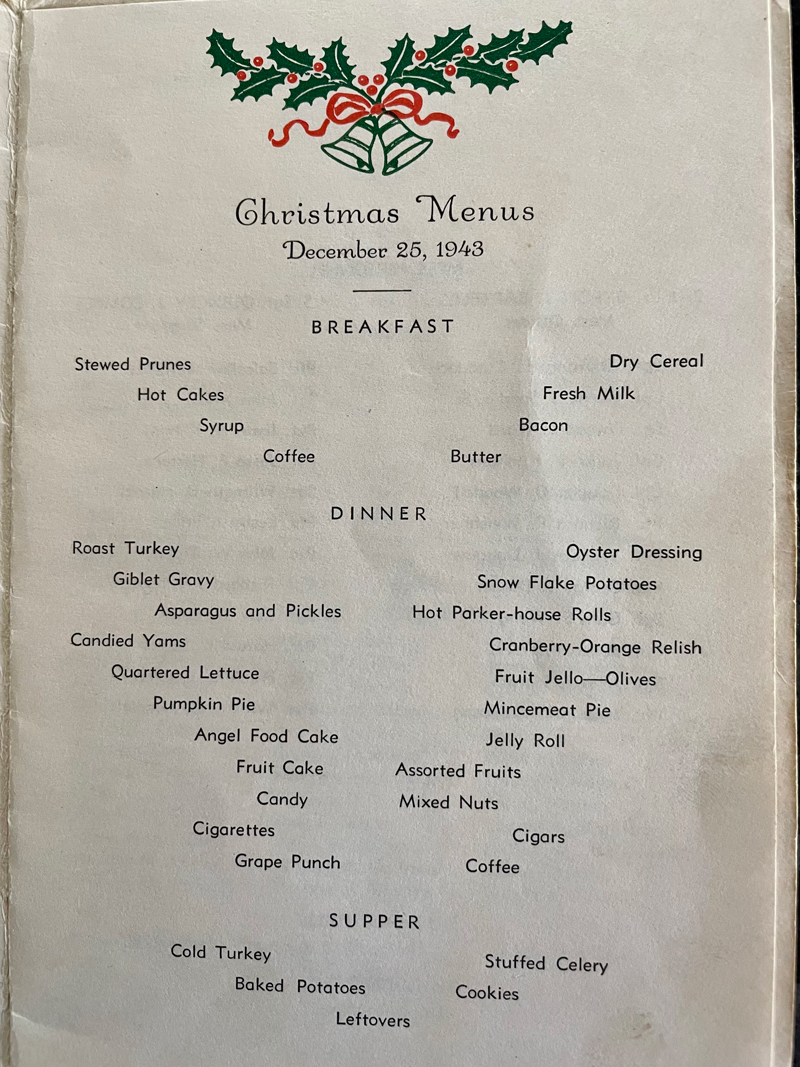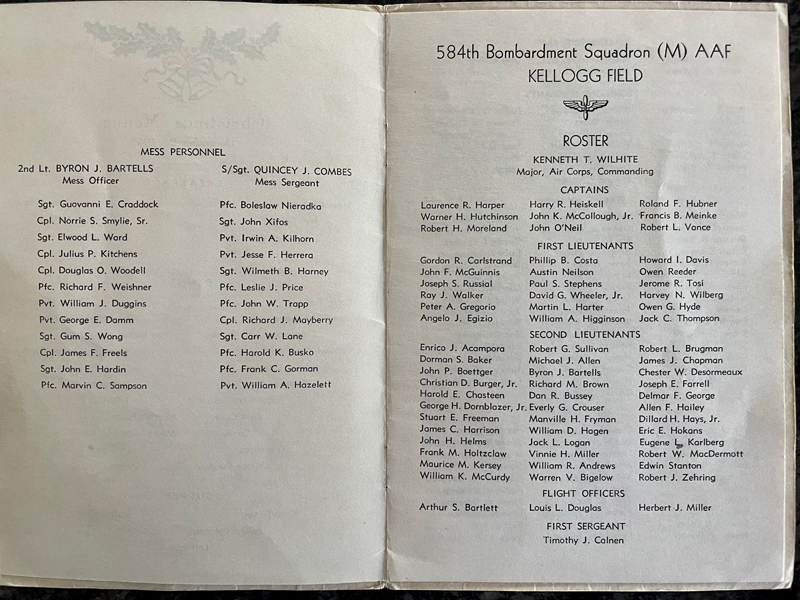|
|
Guest Book | Pages & Links |
Elmer C. Meitzner
9th Air Force 584BS 394BG
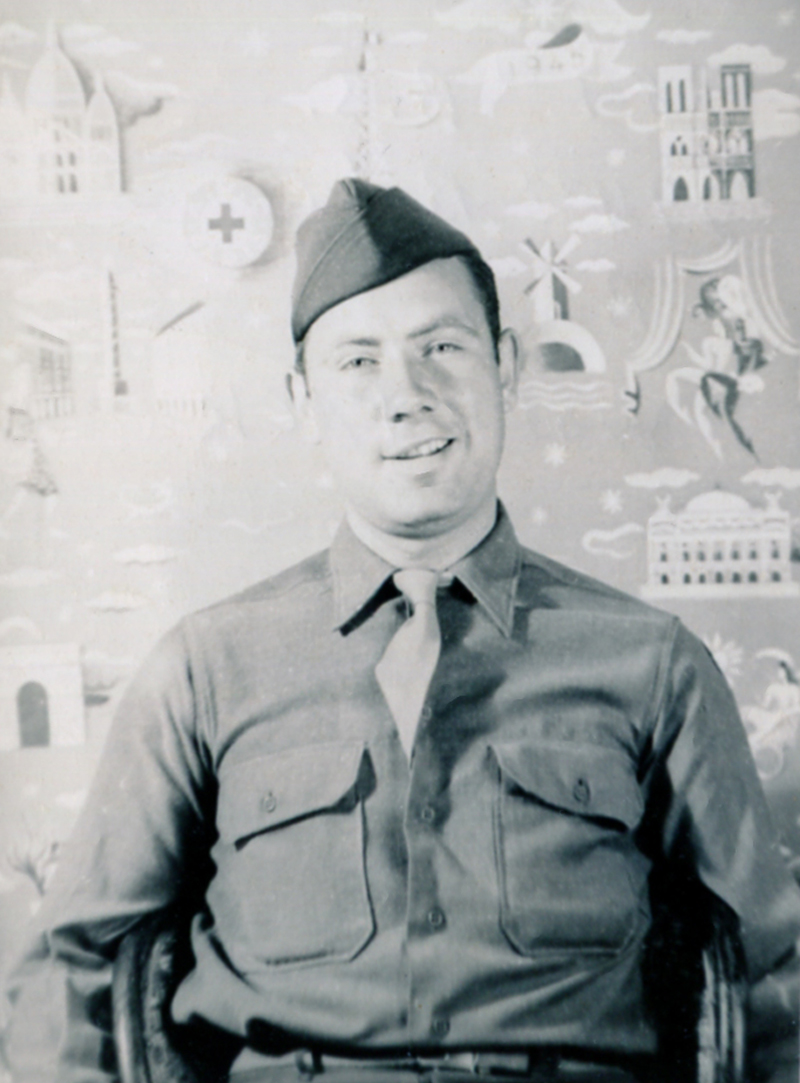
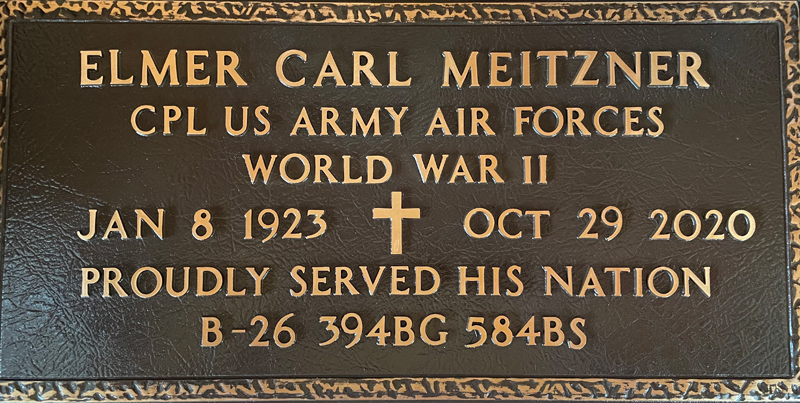
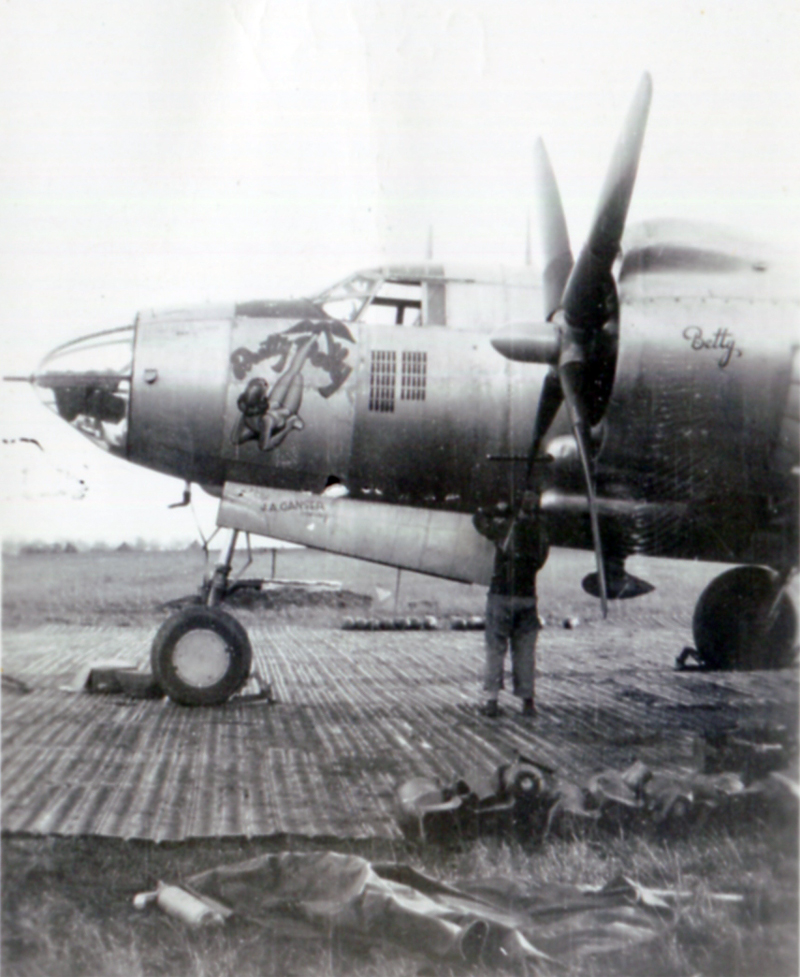
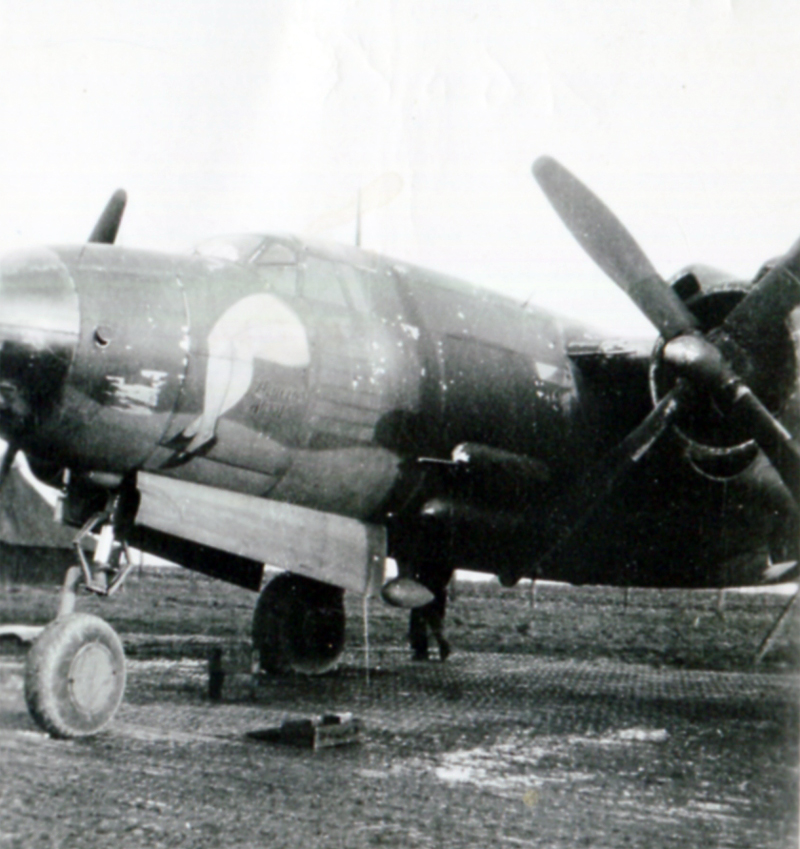
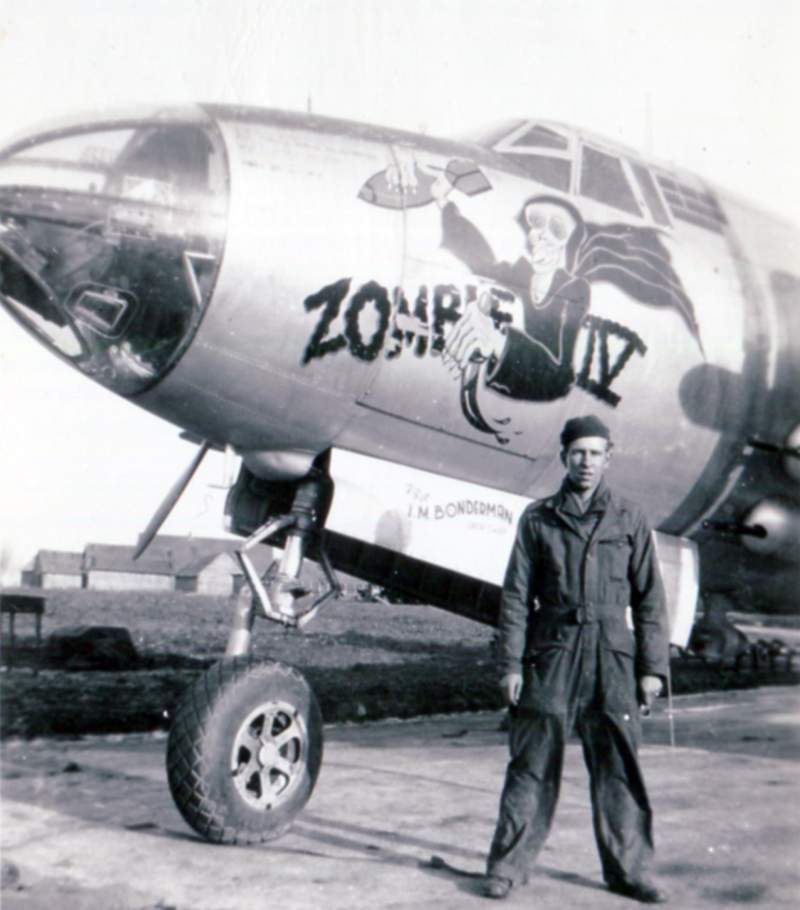
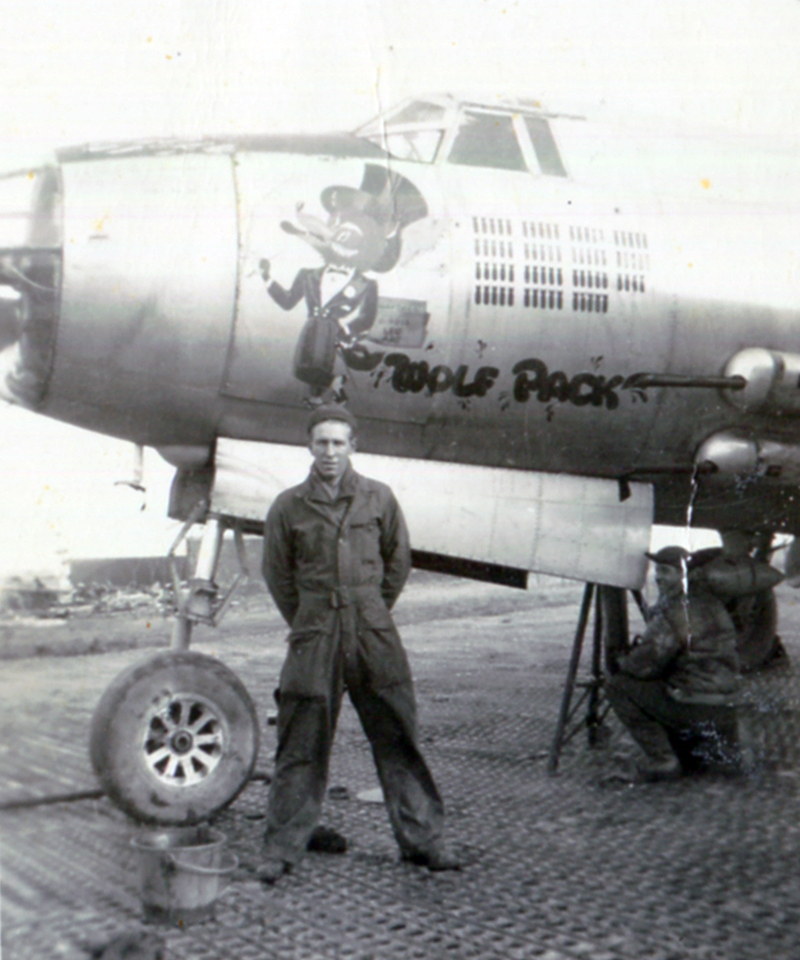
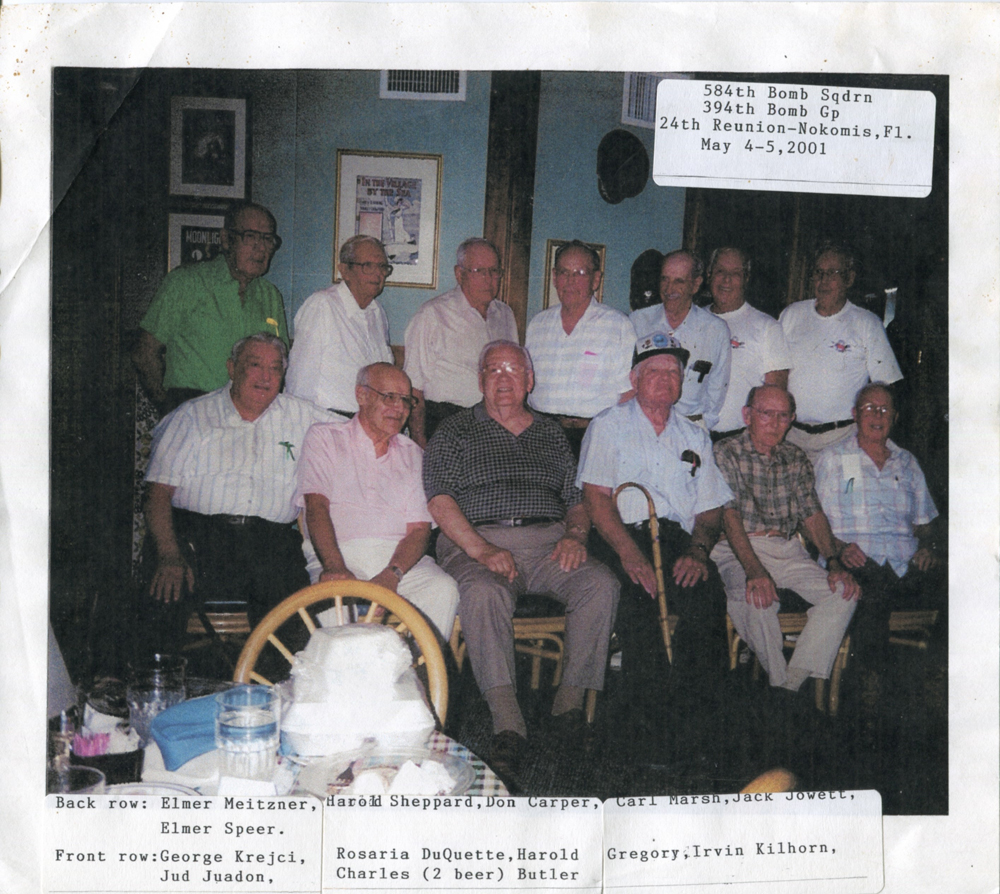
Elmer C. Meitzner, Harold Sheppard, Don Carper, Carl Marsh, Jack Jowett, Elmer
Speer
George Krejci, Rosaria DuQuette, Harold Gregory, Irvin Kilhorn, Jud Juadon,
Charles "Two Beer" Butler
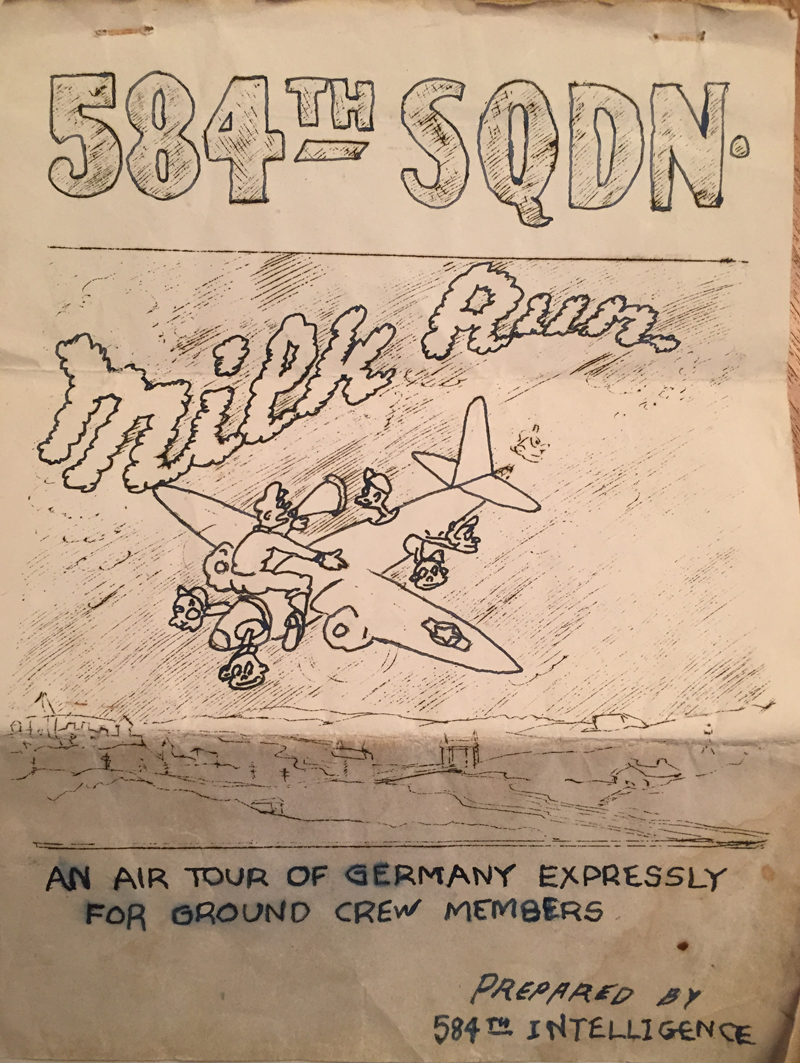
584th Squadron "Milk Run": An Air Tour of Germany Expressly for
the Ground Crew Members.
Page 1
To-day for the first time, the squadron is sending all of you on an air tour
over western Germany and some of the former German industrial centers along the
Rhine River so that you can see for yourselves the destruction wrought against
the enemy by the ceaseless bombing of our bombers. This destruction that
shortened the war immeasurably was brought about only through the long and hard
work and co-operation between the air and ground crews.
"Milk Run" is the title given this tour. You are all familiar with this term
which is applied to a mission that makes an unopposed and uneventful delivery
into enemy territory. During the course of your flight, remember that just a
very short time ago such a course could not have been plotted except in a
nightmare. The route takes you over areas that were the most heavily defended in
all Germany, or for that matter, in all the world.
So your tour is going to be a super Milk Run in that there will be no
opposition. The planes will fly at 1,000 feet and although flying will be new to
some of you, and the angle of vision unusual, 1,000 feet is an altitude from
which you can see and observe ground objects in great detail. As all of you
know, our bombers flew at 12,000 feet when they flew over Germany to drop their
load of bombs. The paralyzing destruction that you will witness was brought
about by the men of your Squadron. If you serviced an engine, loaded a bomb,
fried an egg, or typed a pay voucher, etc., you contributed to this vital job.
It is for this reason that you are being shown what was done by your engines,
with your bombs, by men filled with food that you cooked, or for the pay you saw
that they received. Theirs was a dangerous, often deadly, culmination of the
efforts of the entire Group. They performed with persistent valor and splendid
results. This tour is offered with pride and may be accepted and experienced by
you with pride - pride of our important portion in the final defeat of Germany
and the manner in which we carried it out.
It must be admitted that all the damage you will observe was not inflicted
solely by B-26's. You will see the staggering results of other medium bombers,
B-17 and B-24 raids, RAF poundings, fighter-bomber accuracy and ground artillery
fire. It is believed that this will be an experience for you to remember a
life-time. Miss nothing. Take all the pictures you wish. Write home your
observations, giving as much information as you desire, including your own
assessments of the bomb damage that you will see. You will be able to honestly
state that you have seen Germany from a point of view that very few people have
had to take an opportunity of. Remember one thing and that is avoid disclosing
your unit location. The course that you will fly is outlined within this
pamphlet.
Before we commence on the tour there are two or three things that we’d like to
mention. First of all, when assessing bomb damage, it would be well to take into
consideration several factors: 1. Bombing was done by visual end artificial
means. The latter being, obviously, on days when there was an undercast which
accounts for some bomb craters seen in the open fields. 2. The Jerry was very
adept in repairing damages and all repairs had to be judged from photo
interpretation: consequently, some places were bombed more then once. 3. Most of
the industrial bombing was done by the heavies while most of our bombing was on
bridges, airfields, strong points, gun positions and on the battle lines.
Fighter-bombers hit like targets. 4. The ruins of the bridges over the Rhine
were caused by two things; our bombings to cut off the German retreat, and the
German destruction of their bridges to prevent our advance. 5. Bombing as a
whole was accurate, but of course, the human element has to be taken into
consideration and probably in some isolated cases you may notice bombs that did
not fall exactly on the target. In many instances you have known in the past
where the bombers had gone, but you rarely knew why they went to any particular
place. This pamphlet may help you to throw some light on the latter phase. The
navigator will point out all the targets along the
Page 2
route that your squadron has bombed. You are urged to ask all the questions to
your heart's desire.
The Tour brings you to into Germany across the Maas River in the vicinity of the
Dutch town of Venlo. Venlo was the scene of the last German bridgehead West of
the Maas River. The Maas flows North and it was the flooded conditions of this
river that halted the British 2nd Army. After leaving Venlo, you will head
Southeastward coming into the town of Viersen, Germany then on to the next two
towns of Munchen-Gledbech and Rheydt. These two towns almost adjoin each other.
Munchen-Gledbech, which lies to the North of Rheydt was the second large German
city to fall into American hands. The two towns, in peace time, were important
textile centers and had a large number of spinning and weaving mills making
cotton, woolen and silk products, but a large part of this trade was transferred
early in the war to the textile districts of Saxony and Eastern Germany. Two
important railroad lines, coming from Aachen to the south-west and from Cologne
to the south-east respectively, meet in Rheydt before entering Munchen where
they connect with the main route from Ruhr to Venlo and Holland. It is the
railway junction of importance to the lower Rhineland, and there are large
marshalling yards here. Our squadron attacked the Rheydt marshalling yards in
February with devastating effect. The yards served as a very important
communication center to the Germans. The destruction of these particular yards
greatly hindered the enemy's effort to supply his divisions facing units of the
9th US and British 2nd Armies. It also forced the enemy to use a more circuitous
route for shifting units from the south to the north. In case any of you don't
know what a communication center is we'd better explain it. It is a hub in the
enemy's supply line for bringing up material and fresh troops to meet the
invading forces. The better the roads and railroad networks, the better the
communication point. Considerable activity had been observed in the Ryeydt
marshalling yards by observation planes; consequently, our attack took place and
a good many supply and troop laden freight trains were blown sky high. Five
hundred pound bombs were used to do this job. Twenty-five percent of the load
carried by our bombers had long delay fuses up to 12 hours so you could well
imagine the chaos that resulted. This marshalling yard lies just south from the
central part of the city. The population of Muchen-Gladbech is a 130,000 while
Rheydt has 80,000.
After you leave Rheydt, you change course a few degrees to the right and head
south ward toward the town of Duren. You will all recall Duren. It was in this
area that our forces were fighting savage battles yard by yard through the
defenses of the Siegfried Line in order to penetrate and enter the Cologne
plain. Our bombers bombed in this area numerous times. Most of the objectives
were troop concentrations and strong points immediately in advance of our
troops. Excellent care had to be exercised or bombs from our bombers would fall
on our own troops. If you look just slightly south east of Duren you will notice
a long (North-South) wooded area the lies just west of the main road that runs
to the south-east out of Duren. It was on the Eastern most tip of this woods
that are squadron saturated an ammunition dump, depriving enemy forces of
ammunition that they so critically needed. After our troops had pushed up to the
city of Duren, which was to last city within the Siegfried Line, it presented a
very serious situation to the Germans; consequently, it brought about Von
Runstodt's counter-offensive last December. It was the aim of the Germans to
encompass our forces here and to cut off our supply lines, but the troops held
fast along the Roer River at Duren while the German offensive was beaten back.
Take a good look at Duren because it really is beaten up.
Page 3
After you make almost a 90 degree turn to the right you will head for the German
town of Aachen or Aix la Chapelle as the radio commentators used to announce it.
Approximately two miles off to the right you can see one of Hitler's famous
autobahns or superhighways. This particular highway runs from Aachen to Cologne
to the Ruhr thence on to Berlin. As it is very well known, it was these highways
that helped tremendously in the conquest of the neighboring countries, but later
on aided our forces in their swift movement to Germany.
From here on to Landau to the south, you will pass over the Siegfried Line.
Although most of the gun emplacements are well camouflaged you will be able to
see the dragon's teeth defenses of the line. Dragons teeth are pyramidal in
shape of concrete construction and stretch along the entire western approaches
to Germany. Coming into Aachen, we will all remember that it was the scene of
hard fought battles and was the first large German city to fall into the hands
of the American conquerors. Aachen is important railway junction on one of the
main routes from north-west Germany into Belgium and France. It is the center of
the large coal mining area. In peace-time textiles formed the main industry in
Aachen proper. The town has been severely shattered by bombing and shelling.
Take just one look at the city and I am sure that you will agree that it is
flattened. Population 164,000.
From Aachen you will make a 90 degree turn to the left and head due south for
the town of St. Vith, Belgium, the most important communication center to the
Germans in their counter-offensive last December. Along the way you will pass
over the German-Belgium border and the Hurtgen and Ardennes Forest Region. It
was in the Ardennes area that Von Rundstedt's counter-offensive took place. You
will all recall the squadrons extreme concern at that time as the German forces
pushed westward to Dinant, Belgium, which lies but 74 air line miles from our
base at Cambria that we were occupying. During the night we were getting air
raid alerts and during the day we were all busy, getting our planes and crews
off to help pound the enemy back. It was rough going for both frontline troops
and air crews as ol'man winter held the upper hand but the fight went on with
our crews flying in whether that they would never have dreamed of doing. The
Ardennnes area is very thinly populated with few built up areas. You will
undoubtedly see evidence of the fiercely fought battles that took place there.
Upon leaving St Vith, you will turn a few degrees to the left and pass back over
the German border headed for Trier, Germany. If you will look on your map you
will spot the location of Dasburg, Germany. It was here that the squadron flew
an outstanding mission to attack the highway bridge last January. The bridge was
the Germans main, and almost sole remaining, escape bridge across the Our River
in their retreat back into Germany from the Bulge. Roads approach it in a
semi-serpentine manner and had been observed to be packed with desperate Nazi
traffic. As a result of the attack, this escape route was blocked and the
debacle substantively created a Ninth Air Force fighter-bombers was extreme,
exceeding the Falaise Gap record for destruction of transport vehicles. The
spectacular results of the combined air units brought forth a citation from
General Arnold. You are now flying just five miles inside Germany and are
paralleling the Our river which forms the German-Luxembourg border. You will
cross the tip of the Luxembourg border at the town of Echternach, Germany which
was the first target in Germany that was bombed by your squadron. The town
comprised a series of pillboxes on the outer fringe of the Siegfried Line. Refer
to the map for the location of this town.
You are now entering Trier which lies just north-east of the junction of the
Mosel, Our and Saar Rivers. It is on the River Mosel close to the border of
Luxembourg, and on the railway which follows the Mosel Valley from Koblenz to
Metz. It was an
Page 4
important garrison and army training center. There are several large barracks,
mostly grouped in the northeastern quarter of the town. Trier is a market center
for the wine-growing district of the Mosel Valley. Apart from the large railway
repair shops the only industries are a few small engineering plants. A large
engineering works is located in the small town of Konz-Karthaus, four miles
south-west of Trier. The squadron bombed both the Trier/Pfalzel and the
Konz-Karthaus Railroad bridges back in December. Excellent to superior results
were obtained on both bridges by our bombardiers. The Trier/Pfalzel bridge lies
just two miles northeast of Trier. The destruction of the bridge prevented the
enemy from using a very important rail link which he greatly needed to get
supplies and men to the front for the counter-offensive. The Konz-Karthaus
bridge lies four miles southwest of Trier. This was a bridge on the enemies
supply line and railroad network for this area. For the bombing of bridges the
squadron used both 1,000 and 2,000 pound bombs. The population of Trier is
80,000.
After circling around Trier, you will head in a south-easterly direction for the
town of Saarlautern. If you look out to the right you will note the Saar River.
This river runs right into the town of Saarlautern. This squadron bombed
Saarlautern-Roden, a suburb of Saarlautern, just to the north, when General
Patton's troops were having quite a struggle here last February. If you recall,
it was this bombing that severed some of the electrical connections that the
Germans had rigged up to blow bridges over the Saar River affording Patton's
troops to capture one of the bridges intact and make a crossing in strength. It
was the purpose of this bombing to saturate the town with bombs and it was well
covered.
You will now swing a few degrees to the left and head for the town of
Saarbrucken. Saarbrucken is the largest town in the Saar territory and a most
important industrial and coal mining center. It is near the southern boundary of
the Saar area and is on a main railway line which follows the valley to the
River Saar to Trier. Saarbrucken is a railway junction for several branch lines
serving the industrial regions of the Saar and of Lorraine. Population is
130,000.
From Saarbrucken, you will head eastward to Landau passing over Pirmasens half
way along this leg. Pirmasens is at the terminus of a branch railway line. The
industry of the town has been concentrated on the manufacturing of boots, shoes,
and leather goods, and it is claimed to be the chief center of the German
leather industry. There are several hundred boot and shoe factories in the town,
most of them small but in the aggregate forming a production unit of the
greatest importance to this branch and employing some 30,000 workers. The
squadron bombed the marshalling yards here last December with undetermined
results as the target was covered with clouds. Landau is a railway junction of
importance to the railway system of the Bavarian Palatinate and formed one of
the better communication centers for the Germans in this sector. The town was
bombed by the squadron last March while the 3rd and 7th Armies were pulling a
squeeze play in this area. The town was hit hard.
After leaving Landau, you will head north eastward toward Ludwigshafen, Mannheim
and the Rhine River. Before we discuss any more towns and targets, let's pause a
little while we mention a few things about Germany's historic Rhine River. The
Rhine River has its source near Basel, Switzerland and for 190 miles flows
generally north in a "Rift" Valley - a broad flat bottom valley about 20 to 30
miles wide with the river itself approximately in its center. Near Wiesbaden it
takes a sharp turn to the west and flows in a northwesterly direction. From this
point to Bonn, steep hills rise from its banks. This is generally the "Castle
Area", and its banks are studded with castles built by the various German kings
having such trite names as "Cat", "Mouse", etc. From approximately Bonn to its
mouth in the Dutch Islands the
Page 5
Rhine changes its characteristics again and flows in an open valley on the great
North European Plain. However, on the East Side a few miles from the river rise
the forest dotted hills of the Westerwald which extend northward to the Ruhr
Valley, the great coal mining and heavy industry center of Germany. The Rhine is
strictly a German river, Teuton in every sense of the word and is the locale for
most of the Wagnerian operas - the music deemed to be most typically German.
We now approach Ludwigshaven/Mannheim, twin city separated by the river,
comparable to Minneapolis and St. Paul; their combined populations were normally
about 600,000 people. This is the point where the Necker River flowing from the
east has its junction with the Rhine. You will notice here, as in the other
German cities, evidence of the famous German inland ports, the Necker
straightened out by artificial means flowing into the curving twisting Rhine. It
was along the Nectar River that Patton's Army had much bitter fighting.
Ludwigshaven/Mannheim is the second largest port on the Rhine some of the actual
targets in the cities were: 1) Its Marshalling yards, the second largest in
Germany. 2) The most important electrical works in Germany making superchargers,
submarine engines and turbines. 3) I.G. Farben Industries, a name familiar to
most of you, the largest chemical works in Europe. 4) Submarine diesel engine
works. 5) Thermal power station. 6) Precision tool works. 7) Daimler-Benz
Airplane Engine Plant. 8) Tractor and tank works. 9) Ordinance depot. 10)
Vegetable oil plant. These targets were primarily for the 8th Air Force and the
RAF, who hit them over 15 times in the past year and possibly more than 25 times
in all. As can be expected, this city was heavily defended by anti-aircraft fire
in the Allies have lost more than a 100 bombers here.
From Ludwigshaven/Mannheim go northwest to the town of Worms that lies on the
west side of the Rhrine. It is on the railway which follows the left bank of the
Rhine from Mainz to the Upper Rhine Valley. It is important center of the
leather manufacturing. Other industries, which are on the minor scale, include
engineering, chemicals, and furniture making. Worms has a small inland port. Our
squadron attack the marshalling yards here last March. Worms has a population of
52,000.
You make a turn to the northeast from Worms and head for Aschaffenburg, an
important railroad center with about 35,000 people. The large city of a 120,000
people is Darmstedt, which is just off to your left halfway up this leg. The
heavies clobbered the Marshalling yards here. It is also the home of one of the
largest locomotive works and its chemical works came in for its share. Allied
bombers hit Aschaffenburg nine times in the last six months. The targets were
the marshalling yards which were an important junction on the railroad coming
into the Ruhr from Italy and Romania. One of the most important switching and
transformer stations connecting three electrical supply plants in Germany is
located here plus a large ordinance depot and food storage and tank storage
depots used for Wehrmacht.
At Aschaffenburg will head northwest to Hanau. The main lines to Frankfurt from
Berlin and from Munich join at Hanau before entering the Frankfurt area. From
here you will head westward to Frankfurt, a city over a half million. The main
river flows into the Rhine about 20 miles West of Frankfurt but from the air,
the area down the main and down the Rhine to Bingen appears to be practically
one continuous city. Frankfurt is the center of a highly industrialized area and
it was one of the most charming of the old German towns in addition to being a
financial center. It was Goethes these birthplace and home, and the famous
Rothschild banking family got its start in Frankfurt. The General Motors plant
here made the Opel automobile nicknamed in German "Green Frogs". Being the third
largest inland port in Germany and having two harbors, it is easy to see why it
was hit 22 times in the past year and 30 times in all. The RAF gave its worst
pastings and here for the first time
Page 6
you'll see what those 12,000 pound bombs or "blockbusters" did. Likewise it is
easy to see why it was so heavily defended and the Allies paid for their calls
to this city by losing over 200 bombers here. The targets are at Frankfurt were:
1) Railroad marshalling yards. 2) Aircraft and aircraft engine parts. 3)
Automobile, tank and tractor factories. 4) Boat and shoe factories. 5) Machine
tool and engineering works. 6) Best steel rolling mill in Germany. 7) Biggest
slaughterhouse in Europe.
After passing over Frankfurt you will head for Wiesbaden, a health resort of
European reputation, where you will turn north-northwestward to the city of
Limburg. It was at Limburg where your squadron attacked the marshalling yard
with superior results last March. Reconnaissance had sworn that the yards were
handling very heavy traffic. The yards were situated between the Remagen
bridgehead and the bridgehead at Oppenheim, and was the hub for a very important
network of rail lines in this region. The object of the attack was to destroy
all rail stock in railroad installations at the marshalling yards, and to close
the rail lines to all traffic, and it was fulfilled.
At Limburg you will turn westward to the Rhine and the city of Koblenz. You will
also proceed 15 miles farther westward to the city of Mayen and then retrace
your course back to Koblenz before heading northward. Koblenz is on the main
railway line leading up the Mosel Valley. The town is built at the point where
the Mosel Valley flows into the Rhine. Koblenz is a center for the Rhine wine
trade and has few other industries. It is mainly important as a traffic center.
It was here that the last of the occupational troops left for the United States
after the last war. Koblenz has a population of 86000. The city of Mayen served
as another important communication center to the Germans. I believe that Mayen
was bombed by most every unit at one time or the other.
After leaving Koblenz you will fly over Neuwied, seven miles to the north. The
Squadron bombed the railroad bridge here last February. It was on this very
target that one of the bombers was shot down. The destruction of this bridge
hindered enemy efforts to supply their units facing the 1st and 9th Armies. It
also denied the enemy and important lateral communication which was being used
to shift enemy units. If you will look closely you will see that the bridge
parallels the eastern edge of the Rhine. The bridge is over the Neuwied River
that flows immediately north of the city.
You will be paralleling the Rhine to the North after leaving Neuwied. About 14
miles north of the town of Neuwied is the little town of Remagen. It is rather
hard to identify from the air, but all of us will recall the story of the
Remagen Railroad Bridge, how important it was, and how our Squadron played it's
important part in helping our troops get across and hold their bridgehead by
bombing marshalling yards and troop concentrations that were leading into this
area. The famous bridge approaches the river at an angle and runs north and
south across the Rhine. Now if you look just across the river to the west of
Remagen you will notice the Remagen bridge railroad crossing a tributary of the
Rhine just Northeast of the town of Sinzig. This is known as the Sinzig Bridge
and its approaches were knocked out by the Squadron last February.
You are now headed for Bonn, a city of almost 100,000 people standing at the
entrance of the third phase of the Rhine. Seat of the famous Bonn University, it
has a reputation for its beauty and was a center of German culture. The
University was destroyed in the bombing. It is quite a railroad city, being the
main junction between Cologne and Southern Germany. A light alloy and tube plant
here making incendiaries and bomb component and fuse parts along with a
precision instrument factory and a chemical factory were hit 12 to 15 times by
the heavies.
Page 7
Cologne, with its world famous Cathedral still standing as a tribute to the
accuracy of Allied bombing is about 10 miles north of Bonn. The cathedral is
located almost on the river bank and the Hohenzollern railroad bridge over the
Rhine is to its rear. It is the largest city in this area, the population being
about 750,000. You have all heard of Eau de Cologne - it originated here from
lemon and orange and flower extracts brought from Southern France. It's
expanding circle of streets beginning at the bend of the river and its four
bridges help to identify it. Cologne being the key point on the Berlin/Paris
railroad has five railroad marshalling yards handling over 18,000 freight cars
daily. It was the largest truck producing city in the Reich and the heavies
visited it 24 times since last October. They played no favorites clobbering an
automobile plant owned by an American, one Mr. Henry Ford along with two
submarine works, the largest cable plant in the country, hydraulic press works,
thermal power and carbide plants and synthetic oil works plus some cotton mills.
We now swing a few degrees to the right and pass over Solingen, known as the
Pittsburgh of Germany. It's famous electrical fixtures have a world-wide
reputation. It was here, last February, that our Squadron bombed the important
Solingen-Mangen jet engine works. The damage inflicted against the target
curtailed the enemies jet-propelled program. The population of Solingen is
154,000.
Approximately 14 miles to the left of Solingen lies Dusseldorf. It marks the
southwestern approach to the Ruhr, the most highly industrialized areas in the
world and the great coal mining and heavy industries center of Germany. It is
the third largest inland port in the country handling more than 22 million tons
of freight yearly. Being an important commercial city, its location helped make
it the great administrative headquarters for all the iron and steel works of the
Rhine and the Ruhr. Most of the war’s reprisal weapons, the V-1’s and V-2’s were
manufactured here.
Your course will take you to Dortmund where you will turn westward across the
Rehr, the most highly industrialized area in the world. You have heard of “Flak
Valley'' - well this is it. Just the Ruhr proper contained 1080 heavy guns
protecting it making it the most heavily defended area in the world. If you will
look on your map you will notice the city of Recklinghausen which lies
immediately north of the Ruhr area. The squadron bombed the marshalling yards
here last March with unobserved results due to an undercast. Heavy activity had
been noted in the yards at the time and reconnaissance showed over 2,000 (train
cargo) cars to be there.
You will turn northward from the city of Duisburg on the Rhine and head for the
town of Wesel. This is the area where the famous all-out crossing of the Rhine
took place. Notice the huge bomb carpet that was laid down by the numerous air
units participating in this historic event. Not all the damage that you see was
inflicted by the bombers. A good part of it resulted from the murderous barrage
of ground artillery fire that preceded the initial crossing.
From the town of Wesel you will turn back to the base. On your return you will
have covered about 625 air miles and have been approximately 3 1/2 hours in the
air.
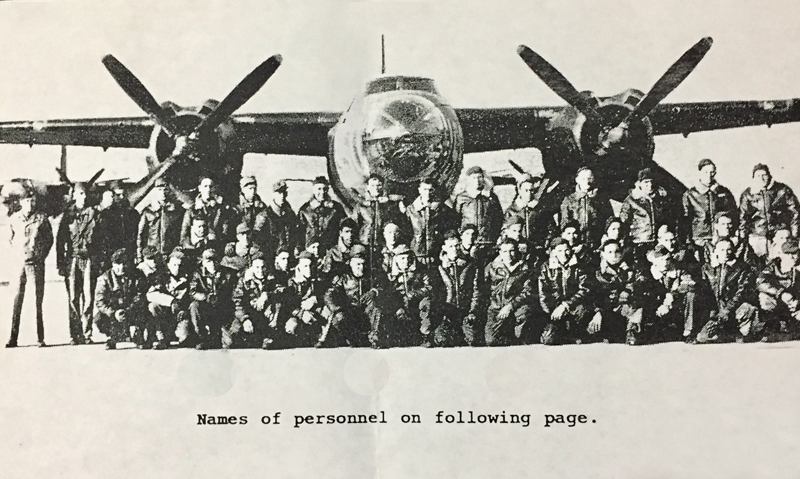
Front row left to right: Sgt. M. E. Bolster, Z/Sgt. A. W.
Pfeiffer, Sgt. B. R. Beyer, Cpl. J. W. Groy, Sgt. J. L. Growcock, Sgt. R. R.
Merriman, Sgt. C. P. Krejci, Cpl. H. R. Devaney, T/Sgt. W. E. Clausen, S/Sgt. S.
(NMI) Kotarski, Cpl. J. C. Kruska, Pvt. R. L. Fugitt, Sgt. I. M. Bonderman,
S/Sgt. R. A. Picou.
Second row left to right: M/Sgt. G. F. German, Cpl. K. R. Standard, Sgt. C. D.
Perro, Sgt. J. R. Heck, Sgt. J. L. Obregon, Cpl. L. R. Atkins, Sgt. W. W.
Krajewski, Sgt. G. T. Knox, Sgt. L. (NMI) Fernandez, Cpl. D. R. Miller, Pfc. J.
J. Haggerty, T/Sgt. H. L. Willett, Cpl. W. F. Collamore.
Third row left to right: Capt. J. K. McCol lough, Jr., M/Sgt. E. (NMI) Dismore,
M/Sgt. J. S. Pugh, M/Sgt. 0. L. Friend, Pfc. E. B. Redman, Cpl. J. T. Bowers,
Pfc. J. (NMI) Burke, Pfc. E. C. Meitzner, Pfc. S. W. Velenger, Cpl. J. B. Jowett,
Cpl. W. A Chase, S/Sgt. H. E. Green, Sgt. V. J. Selkis, Cpl. R. L. Owens, Sgt.
P. E. Fast, Sgt. L. I. Bass.
Not in picture; Msgt. J. A Holmes (Line Chief), T/Sgt. R. (NMI) Davis, T/Sgt. I.
(NMI) Davis, Cpl. W. E. Bauer, T/Sgt. W. J. Mulligan, S/Sgt. M. H. Berason,
S/Sgt. H. C. Stanley, Sgt. C. G. Brewster, Sgt. S. J. Edgar, Sgt. H. J. Elliot,
Sgt. L. A. Ganser, Sgt. E. P. Hellegers, Sgt. J. (NMI) Mulholland, Cpl. J. C.
Bach, Cpl. P (NMI) Black, Cpl. R. T. Brand, Cpl. C. E. Butler, Cpl. J. R. Doty
Cpl. R. G. Duquette, Cpl. M. (NMI) Karaffa, Cpl. A. Machado, Cpl. L. W.
Mulligan, Cpl. J. F. Schroeder, Cpl. V. R. Shelton, Pfc. A. C. Frieder, Pvt. A.
R. plover, S/Sgt. W. J. Miller, Cpl. R. L. Holmes, S/Sgt.| J.P. Barnum, S/Sgt.
W. F. Krauss, Pvt. H. B. Payne, Cpl. H. G. Thomas, Cpl. F. E. Waryasz, Pvt. B. (NMI)
Kowalski, Sgt. C. N. Craig, Pfc. L. W. Breedlove, Sgt. F. (NMI) Herman, Cpl. E.
R. Bark well, Cpl. R. A. Jenkins, Cpl. J. J. Lynch, Pvt. N. (NMI) Frenza, Pvt.
L. F. Hartsock, Pvt. P. (NMI) Reigan, Sgt. R. G. Roepke, S/Sgt. B. (NMI) Of
engender, Sgt. H. E. Gregory, Cpl. J. E. Brennan.
-----------------------------------------
584th Bombardment Squadron (M) AAF, KELLOGG FIELD
ROSTER, KENNETH T. WILHITE, Major, Air Corps, Commanding
CAPTAINS Laurence R. Harper, Harry R. Heiskell, Roland F. Hubner, Warner H.
Hutchinson, John K. McCollough, Jr., Francis B. Meinke, Robert H. Moreland, John
O'Neil, Robert L. Vance
FIRST LIEUTENANTS Gordon R. Carlstrand, Phillip B. Costa, Howard I. Davis, John
F. McGuinnis, Austin Neilson, Owen Reeder, Joseph S. Russial, Paul S. Stephens,
Roy J. Walker, Peter A. Gregorio, Angelo J. Egizio, David G. Wheeler, Jr.,
Martin L. Harter, William A. Higginson, Jerome R. Tosi, Harvey N. Wilberg, Owen
G. Hyde, Jack C. Thompson
SECOND LIEUTENANTS Enrico J. Acampora, Dorman S. Baker, John P. Boettger,
Christian D. Burger, Jr., Harold E. Chasteen, George H. Dornblazer, Jr., Stuart
E. Freeman, James C. Harrison, John H. Helms, Frank M. Holtzclaw, Maurice M.
Kersey, William K. McCurdy, Robert G. Sullivan, Michael J. Allen, Byron J.
Bartel, Is Richard M. Brown Dan R. Bussey r. Everly G. Crouser Manville H.
Fryman William D. Hagen Jack L. Logan Vinnie H. Miller William R. Andrews Warren
V. Bigelow, Robert L. Brugman, James J. Chapman, Chester W. Desormeaux, Joseph
E. Farrell, Delmar F. George, Allen F. Hailey, Dillard H. Hays, Jr., Eric E.
Hokans, Eugene L. Karlberg, Robert W. MacDermott, Edwin Stanton, Robert J.
Zehring
FLIGHT OFFICERS Arthur S. Bartlett, Louis L. Douglas, Herbert J. Miller
FIRST SERGEANT Timothy J. Calnen
